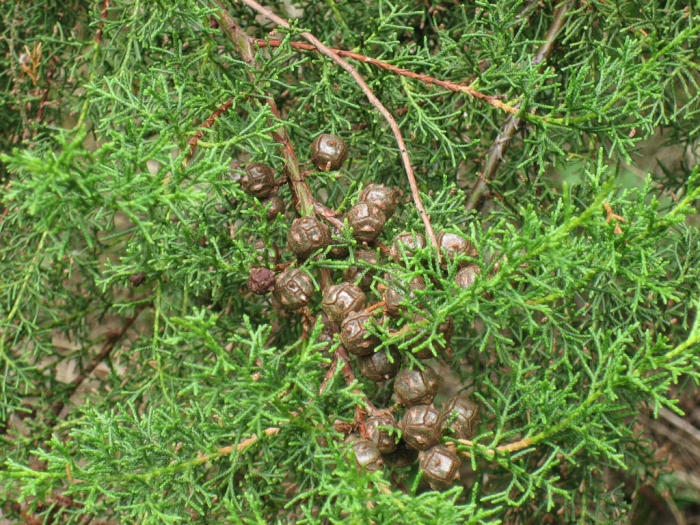Mexican White Cedar
(Cupressus lusitanica)
Mexican White Cedar (Cupressus lusitanica)
/
/

MPF
CC BY-SA 4.0
Image By:
MPF
Recorded By:
Copyright:
CC BY-SA 4.0
Copyright Notice:
Photo by: MPF | License Type: CC BY-SA 4.0 | License URL: https://creativecommons.org/licenses/by-sa/4.0 | Uploader: MPF | Publisher: Wikimedia Commons | Title: Cupressus_lusitanica.jpg | Notes: Cycas thouarsii photo [[User:Jeffdelonge|Jeffdelonge]], Jardin botanique de Lyon, avril 2005 {{GFDL}} {{CC-BY-SA}} [[Category:Cycas thouarsii]] |























Estimated Native Range
Summary
Cupressus lusitanica, commonly known as Mexican White Cedar or Mexican Cedar, is an evergreen coniferous tree native to the highlands of Central America and Mexico, particularly in areas with a cool, moist climate such as cloud forests and mixed pine-oak woodlands. It can reach up to 130 feet in height and 60-70 feet in width, with a conical to columnar form that becomes more open and spreading with age. The tree is characterized by its dense, dark green foliage and small, spherical cones. It produces small, inconspicuous flowers, with the male cones releasing pollen and the female cones developing into woody seed cones.
Mexican Cedar is valued for its fast growth and ornamental qualities, including its attractive bark and dense foliage. It is used for windbreaks, privacy screens, and as a specimen tree in large landscapes. The wood is aromatic and has been used for timber, furniture, and in traditional medicine. In cultivation, it prefers full sun to partial shade, moist but well-drained soils, and it tolerates a range of soil types, including clay. It is relatively low-maintenance but can be susceptible to cypress canker, a fungal disease that causes branch dieback. Gardeners should be aware of its potential invasiveness when grown outside its native range, as it can displace native vegetation and alter ecosystems.CC BY-SA 4.0
Mexican Cedar is valued for its fast growth and ornamental qualities, including its attractive bark and dense foliage. It is used for windbreaks, privacy screens, and as a specimen tree in large landscapes. The wood is aromatic and has been used for timber, furniture, and in traditional medicine. In cultivation, it prefers full sun to partial shade, moist but well-drained soils, and it tolerates a range of soil types, including clay. It is relatively low-maintenance but can be susceptible to cypress canker, a fungal disease that causes branch dieback. Gardeners should be aware of its potential invasiveness when grown outside its native range, as it can displace native vegetation and alter ecosystems.CC BY-SA 4.0
Plant Description
- Plant Type: Tree
- Height: 30-50 feet
- Width: 60-70 feet
- Growth Rate: Rapid
- Flower Color: N/A
- Flowering Season: Non-Flowering
- Leaf Retention: Evergreen
Growth Requirements
- Sun: Full Sun
- Water: Medium
- Drainage: Medium, Fast
Common Uses
Bird Garden, Drought Tolerant, Fragrant, Hedges, Low Maintenance, Salt Tolerant, Street Planting
Natural Habitat
Highlands of Central America and Mexico, particularly in cloud forests and mixed pine-oak woodlands
Other Names
Common Names: Cedar Of Goa, Mexican Cypress, Mexikanische Zypresse, Cedro, Cedro Blanco Del Deserto, Cedro Blanco, Cedro De Busaco, Cedro De Goa, Ciprès, Ciprés De Portugal
Scientific Names: , Cupressus lusitanica, Cupressus lusitanica var. benthami, Cupressus mexicana, Cupressus lusitanica subsp. mexicana,
GBIF Accepted Name: Cupressus lusitanica Mill.